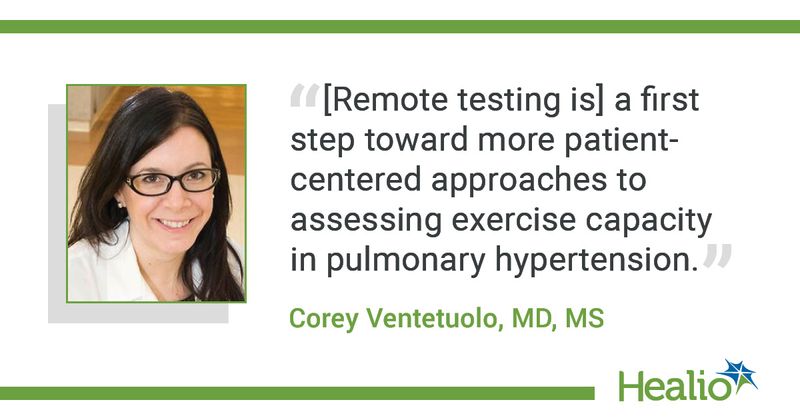Remote 6-minute walk testing may be valid in pulmonary hypertension
Click Here to Manage Email Alerts
Remote 6-minute walk testing was consistent with standardized clinic walks and may be valid in pulmonary testing, researchers reported in the American Journal of Respiratory Critical Care Medicine.
“How a pulmonary hypertension patient performs on a standardized in clinic 6-minute walk test may not reflect how difficult (or easy) it is to chase around their children or grandchildren or go grocery shopping,” Corey E. Ventetuolo, MD, MS, associate professor of medicine and health services, policy and practice at Brown University, told Healio. “The COVID pandemic has forced us to think creatively about ways to monitor and care for patients. This presented an opportunity to study remote 6-minute walk testing as a first step toward more patient-centered approaches to assessing exercise capacity in pulmonary hypertension.”

This two-center, observational pilot study enrolled 25 adults (mean age, 51 years; 72% women) with pulmonary arterial hypertension or inoperable or medically managed chronic thromboembolic pulmonary hypertension in functional class I to III on stable therapy for 6 weeks. All participants completed a standard 6-minute walk test administered by a technician, then a practice 6-minute walk test in a remote location and a formal 6-minute walk test in the same remote location. Remote tests were conducted with a study coordinator on a video or audio call on preapproved 30 m flat, straight and hard surfaces with supplies given by study personnel.
If masks were used during all three walks, participants were encouraged to use the same type of mask for each session.
Most participants had PAH (88%), with 44% idiopathic and 24% connective tissue disease-related PAH, and 12% had chronic thromboembolic pulmonary hypertension. Researchers observed no systematic differences in average 6-minute walk distance between in-clinic and remote settings, across sites or between in-clinic and remote testing by site.
Researchers observed excellent consistency between in-clinic and remote 6-minute walk distance. However, during remote walks, masked participants had lower average 6-minute walk distance compared with unmasked participants (484 m vs. 504 m; P = .03).
For adverse outcomes, one participant experienced lightheadedness and tinnitus during a remote 6-minute walk test, and one participant had an upper respiratory infection but did not withdrawal from the study.
“We need validated approaches to assess how patients feel and function in their daily lives,” Ventetuolo said. “Additional research incorporating telehealth and mobile health technologies in the care of pulmonary vascular disease patients is needed.”
For more information:
Corey E. Ventetuolo, MD, MS, can be reached at corey_ventetuolo@brown.edu.

